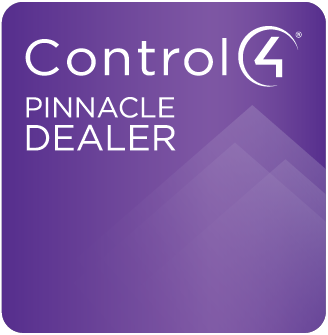Designers & Architects: Your Guide to Cell Booster Systems
Consider Cell Signal Booster Integration Before Construction Is Complete
Do you remember the early-2000s AT&T/Cingular commercials where calls would drop at the most unfortunate or awkward moments? As funny as those were, unreliable cell service is incredibly frustrating, especially today as we depend on our smartphones for social media, video calls, and streaming.
These days, few homeowners use landlines, and many businesses use cell phones as their primary communication devices. But due to internal and external factors, some locations receive very weak cellular signals. That’s where cell booster systems save the day.
If you’re an architect or builder, your clients expect all technology inside their building to be well-running and reliable. We share below all you need to know about cell booster systems to elevate your next build projects in Charlotte, NC.
SEE ALSO: Hidden Technology Makes for Stunning Interior Design
What Is a Cell Booster System?
A cellular signal booster system, like those manufactured by SureCall, is made of three elements: an exterior antenna, an amplifier, and an interior antenna. They form a wireless network that boosts cellular reception and can be installed in homes, offices, commercial buildings, and even boats or cars. SureCall’s booster systems work with all carriers, so your client won’t have to worry about it working for phones that use AT&T, Verizon, Sprint, or another brand.
How Does It Work?
The exterior antenna (also known as donor antenna) is installed on the outside of the building in a location that receives the strongest signal from the closest cell tower. This captures the weak cell signal and pulls it into the building.
The signal passes through a cable into the building and into the signal booster, which then sends the signal to the interior antenna. The internal antenna broadcasts the now-strong signal throughout the building.
What Kind of Properties Need a Cell Booster?
Maybe you’re working on a new luxury home in the woods or an office building downtown. Many properties experience weak cell reception for a variety of reasons. Natural obstructions like trees, buildings, mountains, and distance from a cell tower can cause spotty signals. Indoors, building materials like brick, concrete, and metal can block reception.
Not only will your design clients enjoy strong cell signals, but their phone battery life will thrive, too. Boosters can extend battery life by 180 minutes of extra talk time, as the phone doesn’t have to strain to connect.
How Can We Design for Cell Booster Integration?
It’s wise to consider how a booster system will be designed into the fabric of a building—just like you would for other utilities. By partnering with a technology professional like The Integrated Home, we can wire and install the system before construction is complete, so everything is finished over without a cable in sight.
We’ll first conduct a site survey to pinpoint the weakest and strongest signal areas on the property. We use a signal meter to identify the best broadcast installation points and, from there, run wires through the walls. It’s best practice to minimize cable lengths to avoid performance loss, so we have to be strategic about where each antenna is installed. If the building layout requires longer cable runs, the system may require more antennas or boosters to sufficiently broadcast the signal.
To avoid oscillation (overlapping antennas that cause feedback), we may need to create a barrier with a metal shield. Another potential issue is overload, which occurs when the incoming signal is too strong. We’ll add inline attenuators or shield the donor antenna to avoid this.
Need Assistance with Cell Booster Systems on Your Next Project?
Partner with The Integrated Home in Charlotte to seamlessly assimilate cell boosters in your residential or commercial builds. Contact our team here for any questions or to get started today. We look forward to hearing from you!








